When you're choosing between voile and chiffon for your next project, you'll need to understand their distinct characteristics. These lightweight, sheer fabrics might appear similar at first glance, but their weave structures create notably different effects. Voile's plain weave with high-twist yarns yields a crisp, semi-sheer finish, while chiffon's S-and-Z twist construction produces an ethereal, floating effect. Let's explore the differences between these types of sheer fabric.
Key Takeaways
- Chiffon has a softer, more fluid drape, while voile maintains a crisper, more structured appearance in garments.
- Voile offers better durability and easier care with machine washing, whereas chiffon requires delicate handling and dry cleaning.
- Chiffon creates ethereal, romantic looks ideal for formal wear, while voile suits structured everyday garments and home décor.
- Voile features a semi-transparent appearance with a slight sheen, while chiffon has a more transparent, matte finish.
- Voile is easier to sew with its stable texture, whereas chiffon's slippery nature requires special construction techniques.
What is Chiffon?
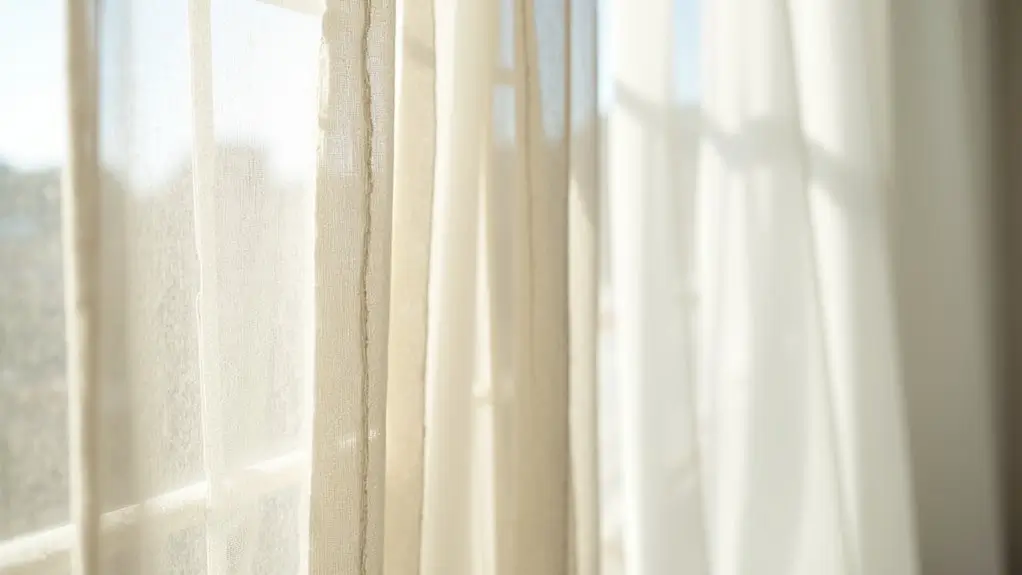
Chiffon's sheer construction comes from its twisted crepe yarns in plain weave, typically made from silk, polyester, or nylon fibers. You'll find this lightweight fabric characterized by its distinctive grainy texture and fluid drape.
Chiffon's versatile properties make it a popular choice for formal wear, overlays, and decorative elements, though its slippery nature requires careful handling during garment construction.
Definition and Composition
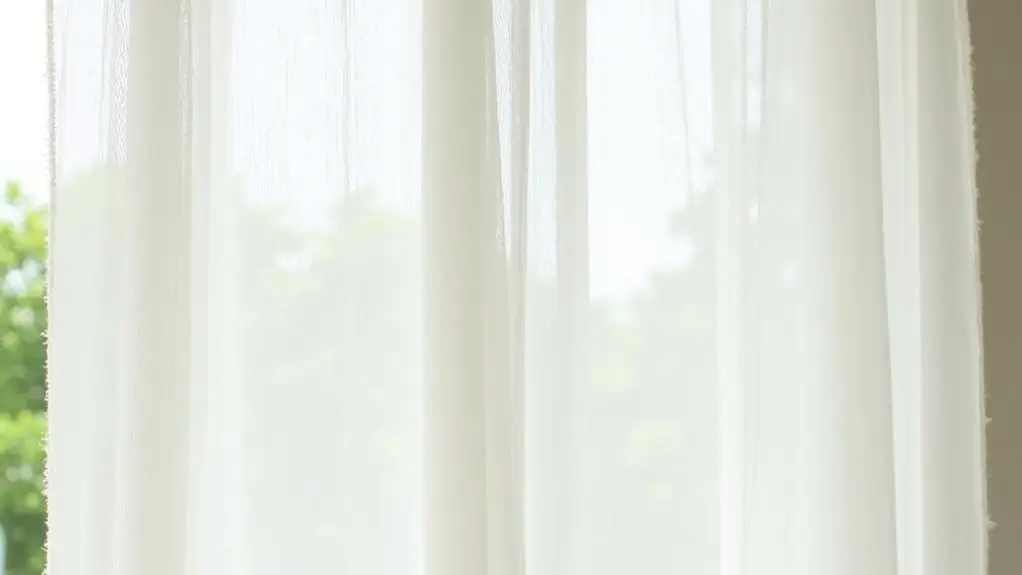
Chiffon stands out as a sheer, lightweight fabric composed primarily of silk, nylon, or polyester fibers. Its distinctive characteristics stem from a unique twisted weave construction, creating a slightly crinkled surface texture that enhances its delicate appearance.
The fabric's structure allows for exceptional draping qualities, making it ideal for flowy dresses.
When you examine chiffon closely, you'll notice its transparent nature results from the spacing between yarns in the weave pattern. This architectural arrangement gives chiffon its ethereal quality while maintaining enough tensile strength for garment construction.
Characteristics
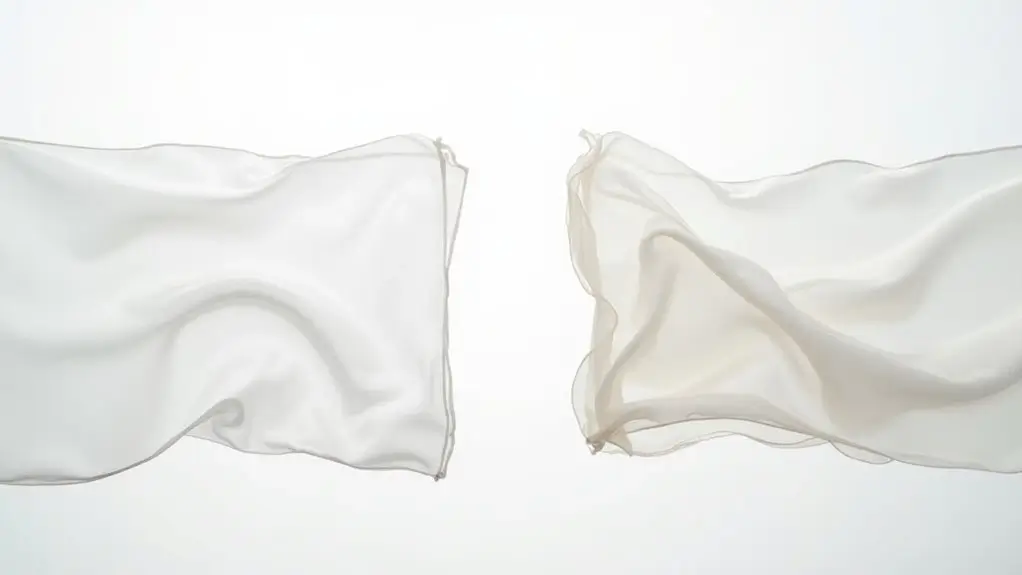
The lightweight nature of chiffon distinguishes it as one of fashion's most ethereal textiles, characterized by its delicate sheer weave and remarkable draping properties.
You'll find this fabric's soft drape creates fluid movement, enhanced by its slightly crinkled surface texture. The fabric's translucent quality varies by fiber content, whether silk or synthetic, while maintaining its gossamer-like appearance.
Its versatility spans from luxurious evening wear to delicate accessories, offering both visual and tactile elegance.
Common Uses
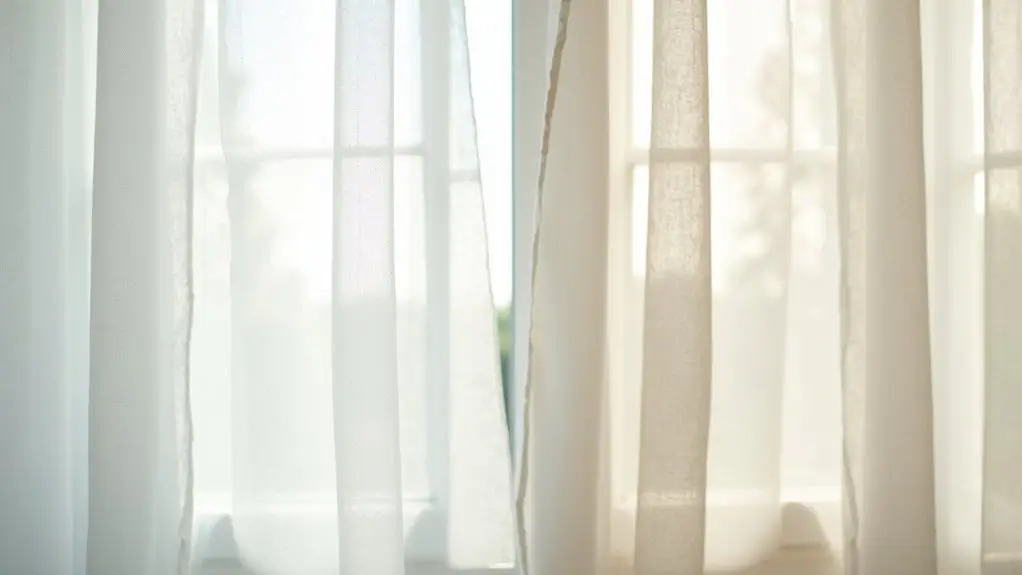
Delicate and ethereal, chiffon fabric finds its place in an array of fashion applications where lightweight draping is essential.
This versatile material predominantly in formal evening wear, bridal gowns, and special occasion dresses where its flowing characteristics create graceful movement and layered effects. Chiffon's superior draping quality makes it perfect for creating soft, romantic silhouettes in blouses and scarves.
Its transparent nature allows for creative layering techniques, especially in wedding attire and formal accessories.
When working with chiffon, you'll need specialized sewing techniques to manage its delicate weave and prevent fraying.
What is Voile Fabric?
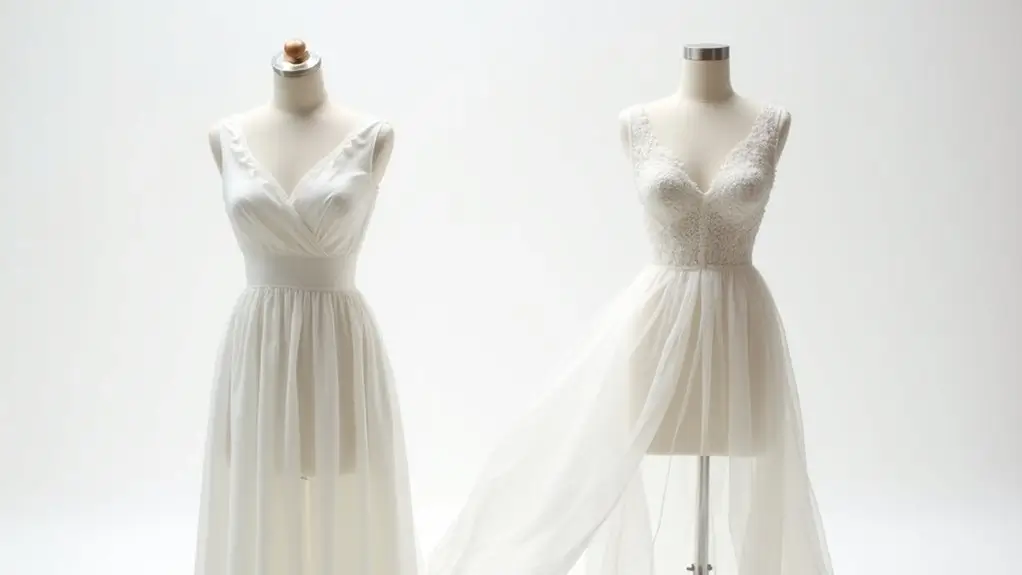
Voile is a lightweight, sheer textile woven from tightly twisted yarns of cotton, silk, or synthetic fibers using a plain weave construction. This fabric is characterized by its semi-transparent appearance and slightly crisp hand, resulting from the high-twist yarns and balanced weave structure.
The fabric's distinctive properties make it an excellent choice for structured garments, bridal veils, window treatments, and home decor applications.
Definition and Composition
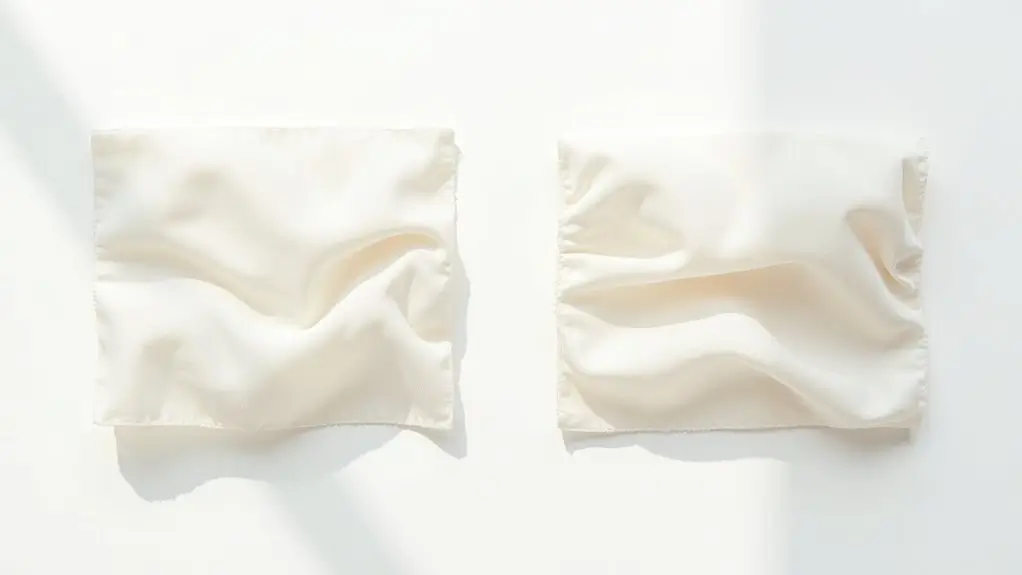
Made from cotton or polyester fibers, voile stands out as a lightweight sheer textile with distinctive structural properties. You'll find its unique composition creates a crispness that sets it apart in the world of sheer fabrics.
Unlike chiffon, voile fabrics maintain a more structured drape while remaining remarkably airy. You'll discover this fabric combines strength with delicacy, making it ideal for both fashion and home decor.
Characteristics
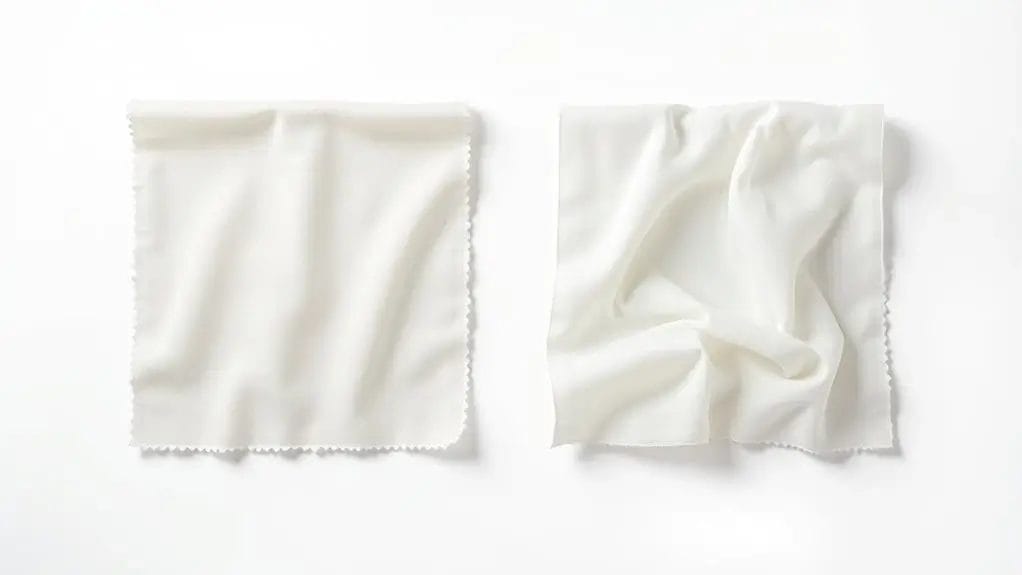
The structural integrity of voile fabric emerges from its distinctive plain-weave construction. You'll find this weave pattern contributes to voile's characteristic stiffness, making it different from chiffon's softer drape.
The fabric's unique construction allows it to achieve a delicate balance between structure and airiness, making it ideal for applications requiring defined forms.
Whether you're working with wedding veils or chair sashes, voile's consistent weave ensures reliable performance across various design applications.
Common Uses

Designers and crafters frequently turn to voile fabric for its exceptional versatility across both decorative and garment applications.
You'll find this transparent textile used extensively in wedding veils, where its structured drape creates an elegant silhouette. The fabric's structured nature makes it ideal for dress linings, while its generous width options accommodate large-scale projects like tablecloths and curtains.
For event decor, voile's ability to maintain shape while remaining lightweight makes it perfect for overlays and drapery.
Its structured yet airy qualities enhance both apparel and decorative applications, offering superior functionality across diverse projects.
Key Differences Between Chiffon and Voile
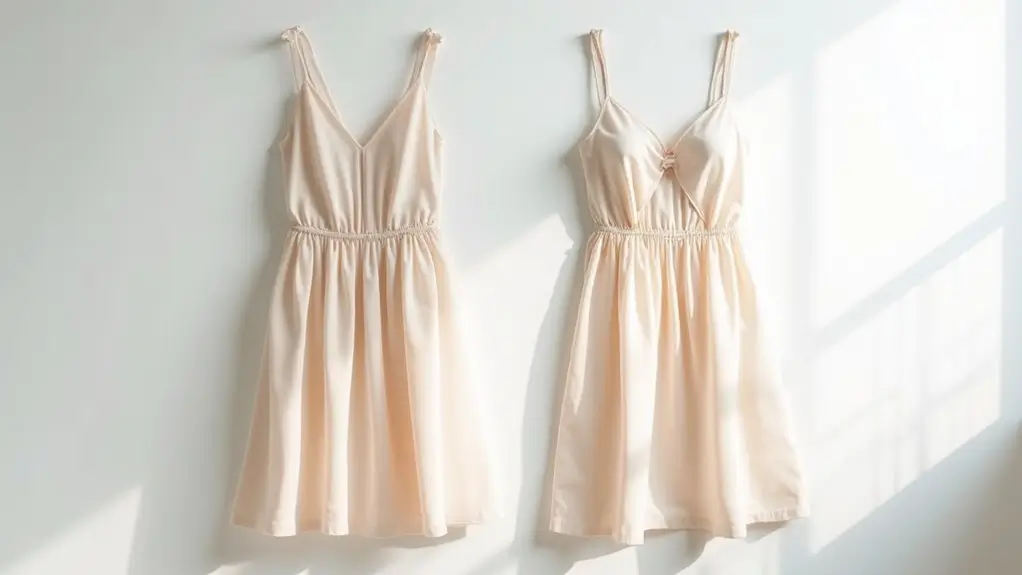
When you're comparing voile and chiffon, you'll notice voile's crisper hand and more structured drape against chiffon's softer, more fluid movement.
Voile maintains its shape with a plain weave construction while chiffon's twisted yarn structure creates a more gossamer appearance and lighter opacity.
Texture and Feel
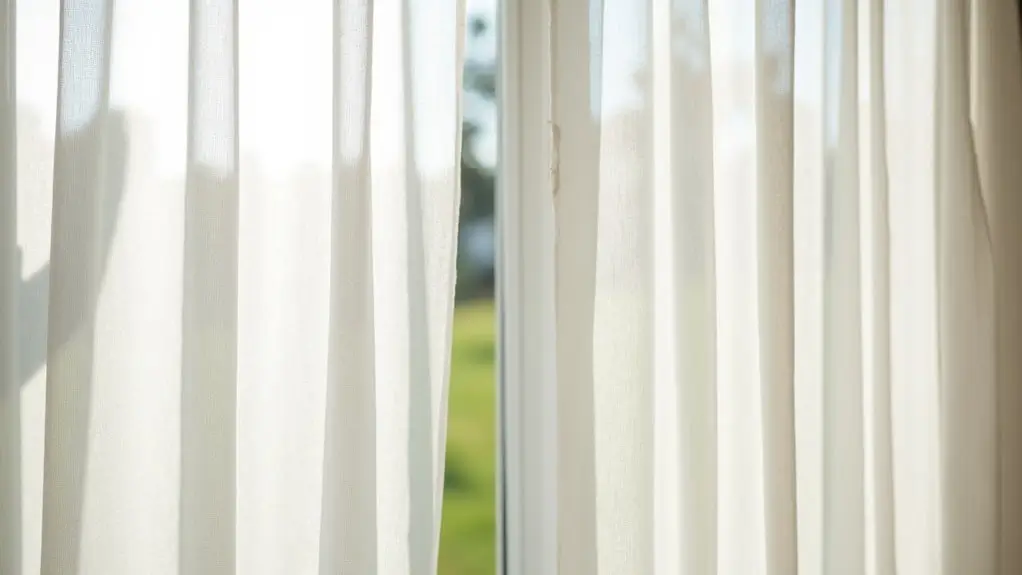
Distinct textural characteristics set voile and chiffon fabrics apart in both hand-feel and structural integrity.
Voile's smoother surface and firmer hand, offering a crisp yet airy texture that maintains its shape when draped. In contrast, chiffon presents a slightly crinkled surface with an exceptionally soft, flowing quality.
This textural difference makes voile ideal for structured pieces like veils and formal garments, whereas chiffon excels in creating ethereal, flowing designs.
Opacity and Sheerness
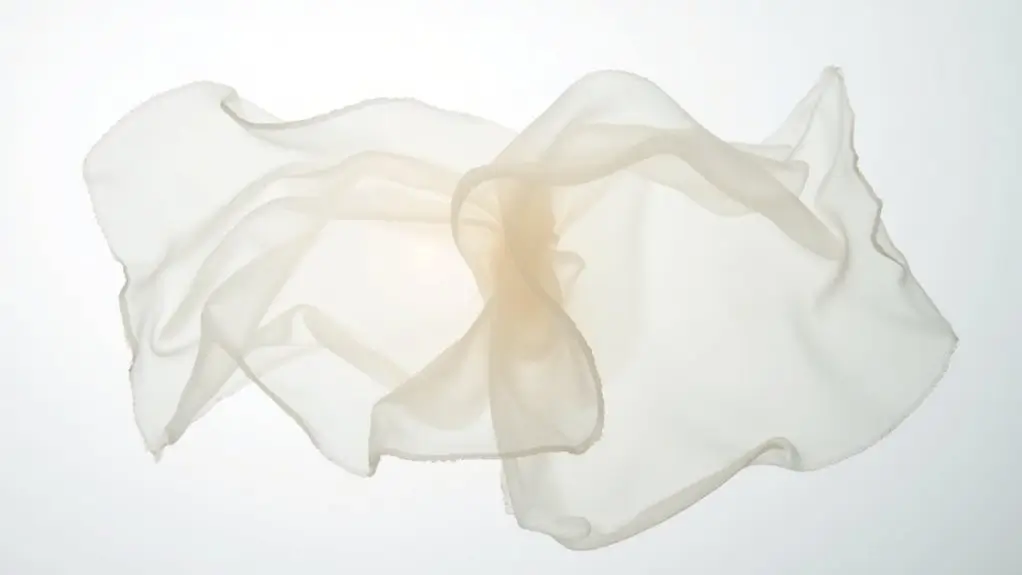
Transparency levels distinguish voile and chiffon in their sheerness properties.
When you're examining chiffon, you'll notice its ultra-sheer characteristics, creating an almost ethereal transparency that's perfect for layered evening wear and delicate overlays. Voile, while still maintaining a lightweight appearance, offers slightly more opacity in its construction.
Durability and Care
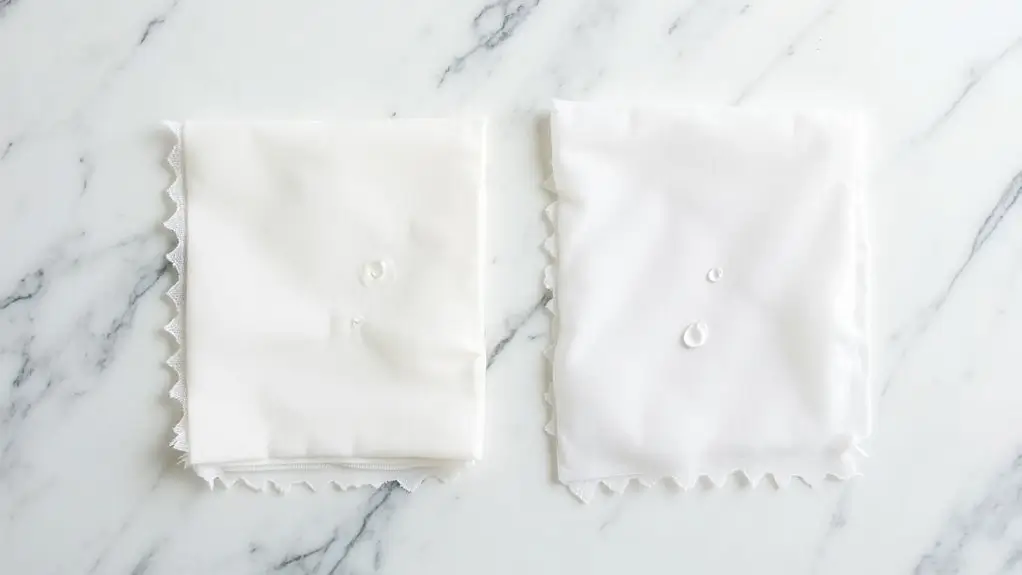
Beyond their sheerness differences, durability and care requirements set these fabrics distinctly apart in practical applications.
Voile's stiffer construction offers superior durability, resisting snags and wear better than chiffon’s delicate composition. In terms of care, voile can withstand gentle machine washing, while chiffon demands dry cleaning to preserve its fine texture.
Aesthetic Appeal
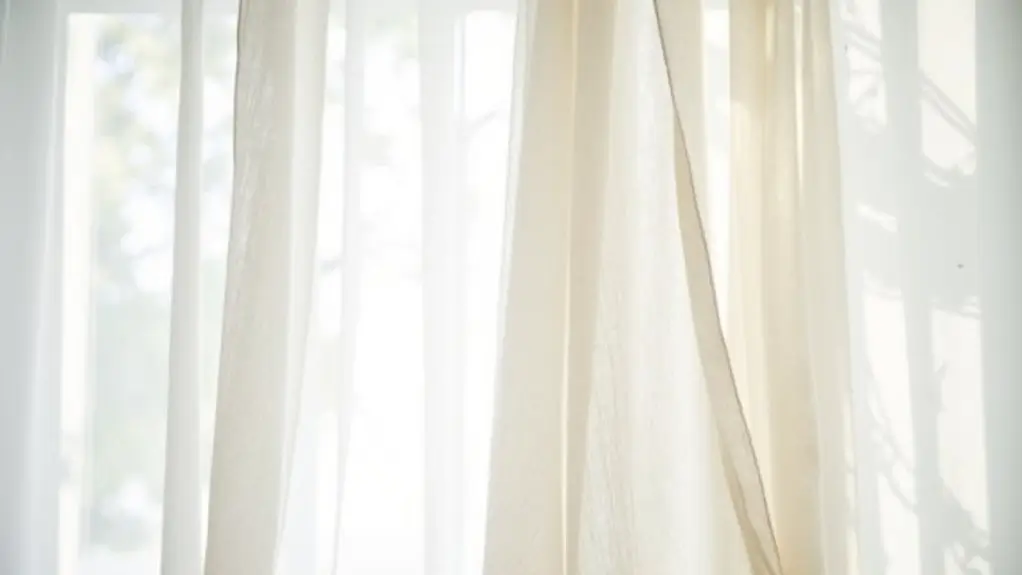
The visual allure of voile and chiffon emerges primarily through their distinctive structural compositions and light interaction properties.
You'll notice voile's characteristic sheen creates a sophisticated aesthetic appeal, complemented by its crisp texture and structured drape. This fabric's surface catches light differently than chiffon, producing a refined luminosity that enhances its delicate appearance without sacrificing form.
In contrast, chiffon's matte finish and fluid movement offer an ethereal quality. Its softer, more slippery texture creates a dreamy aesthetic that's particularly striking in layered designs.
Choosing Between Chiffon and Voile
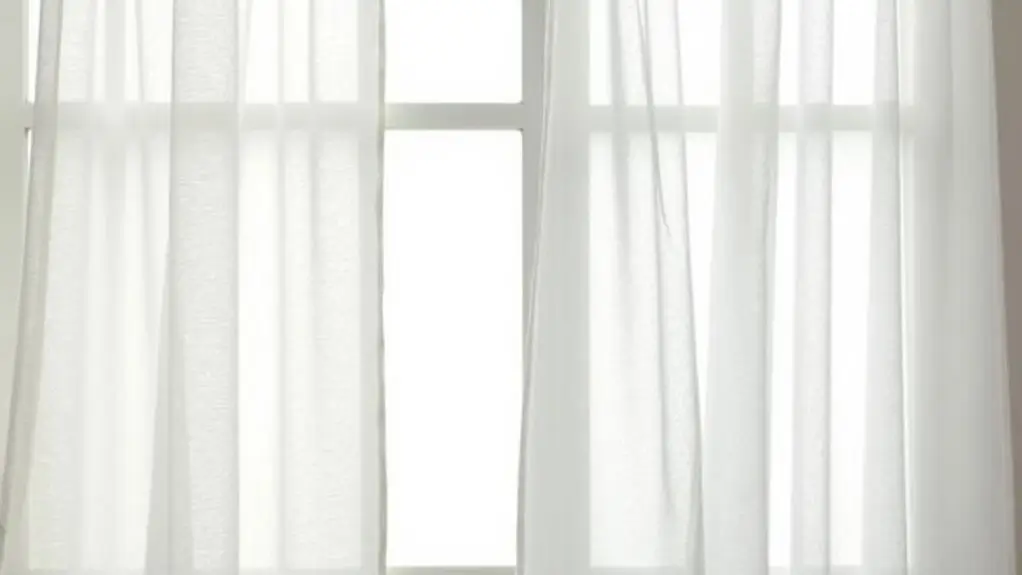
When selecting between chiffon and voile for your project, you'll need to assess crucial factors including drape requirements, structural needs, and the width of fabric necessary for your specific application.
Factors to Consider
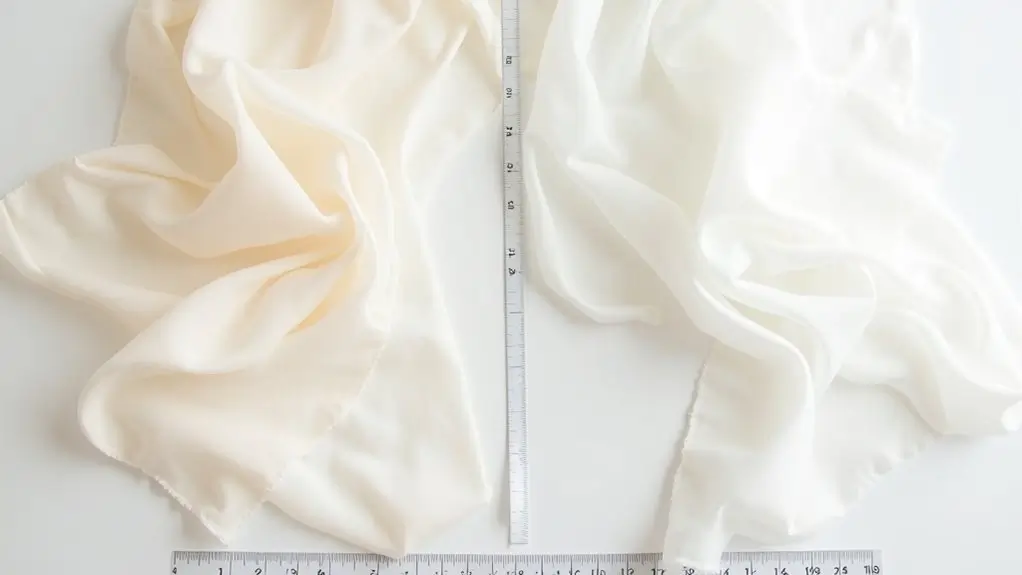
Selecting between voile and chiffon requires careful consideration of your project's structural needs and desired drape characteristics.
For structured pieces, you'll find voile's stiffer composition and higher thread count provide better stability while maintaining breathability. Chiffon's softer drape suits flowing designs where delicate movement is essential.
Consider durability when choosing your fabric. Voile's sturdier construction resists snags, making it ideal for high-wear items like tablecloths and dress linings.
You'll discover traditional voile options for varied textures, while chiffon offers a consistent smooth finish.
Match your fabric choice to your project's specific requirements for optimal results.
Combining Fabrics
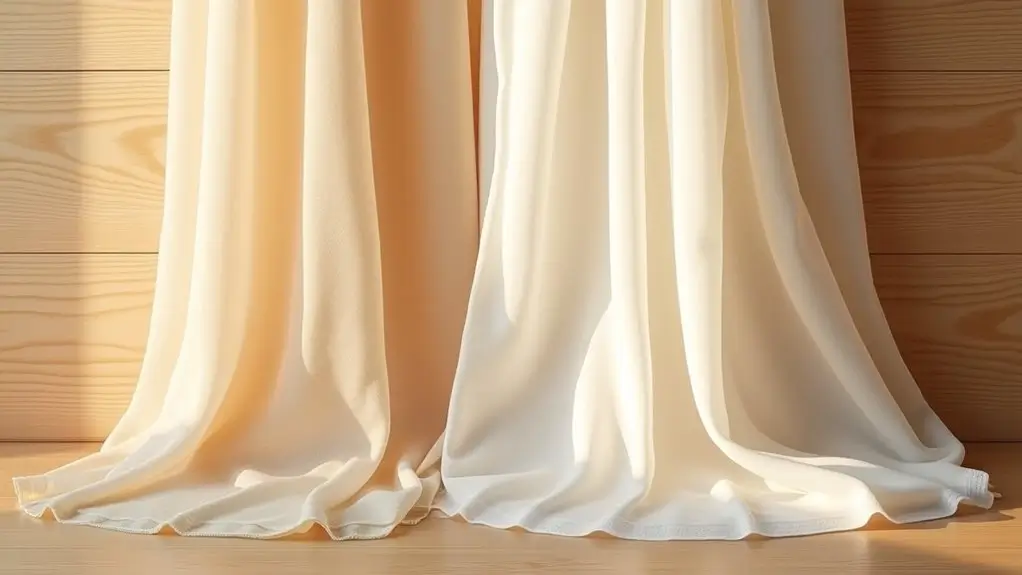
Successful fabric combinations often depend on understanding the distinct characteristics of voile and chiffon. These semi-transparent fabrics can create stunning effects when strategically paired.
- Layer voile's structured weave over chiffon to achieve depth while maintaining shape integrity in draped designs.
- Combine chiffon overlays with voile underlays when you need stability without compromising the ethereal flow.
- Mix both fabrics in alternating panels, utilizing voile's crispness for structured sections and chiffon's fluidity for flowing elements.
This fabric pairing technique enhances your design possibilities while maximizing each material's unique properties.
Conclusion
Both chiffon and voile are popular sheer fabrics, each with its own unique characteristics and uses. Chiffon is known for its soft, flowing drape and slight stiffness, making it a favorite for elegant evening wear and delicate accessories. On the other hand, voile offers a lighter, more breathable feel, perfect for casual garments and airy home décor. Understanding the differences between these two fabrics can help you choose the right one for your projects.


0 comments